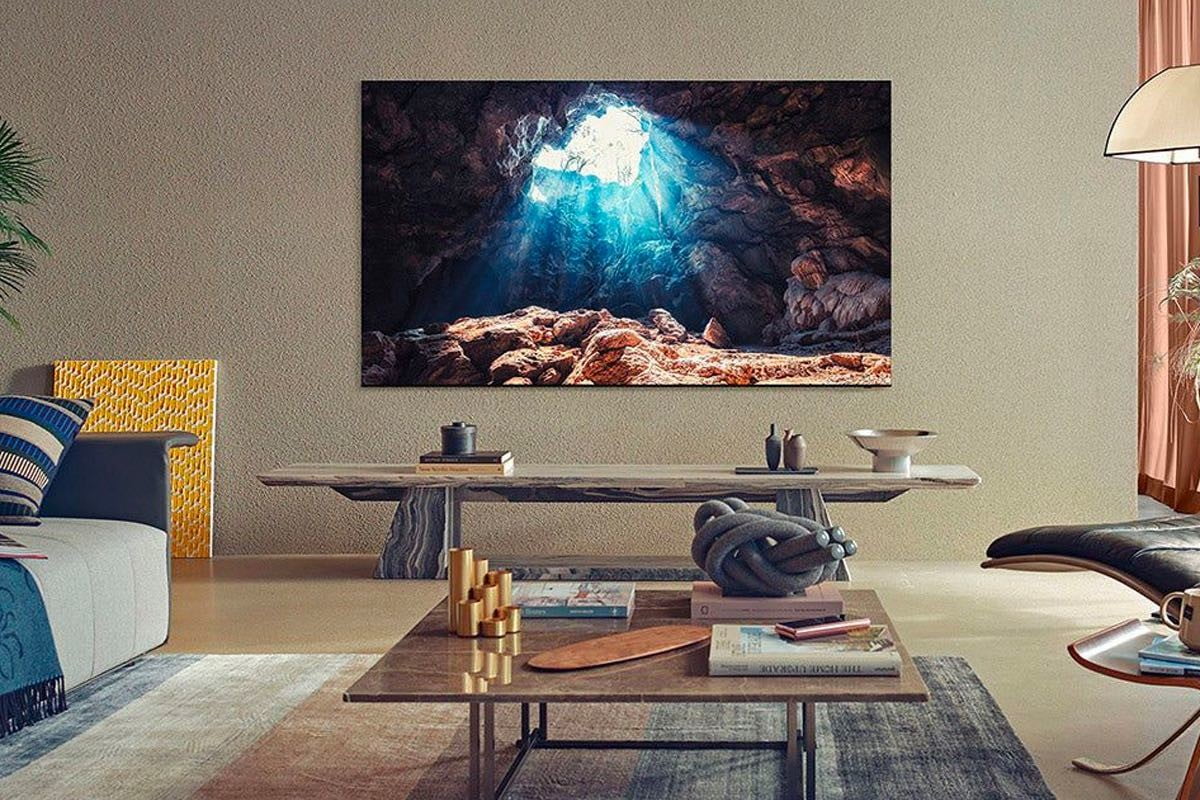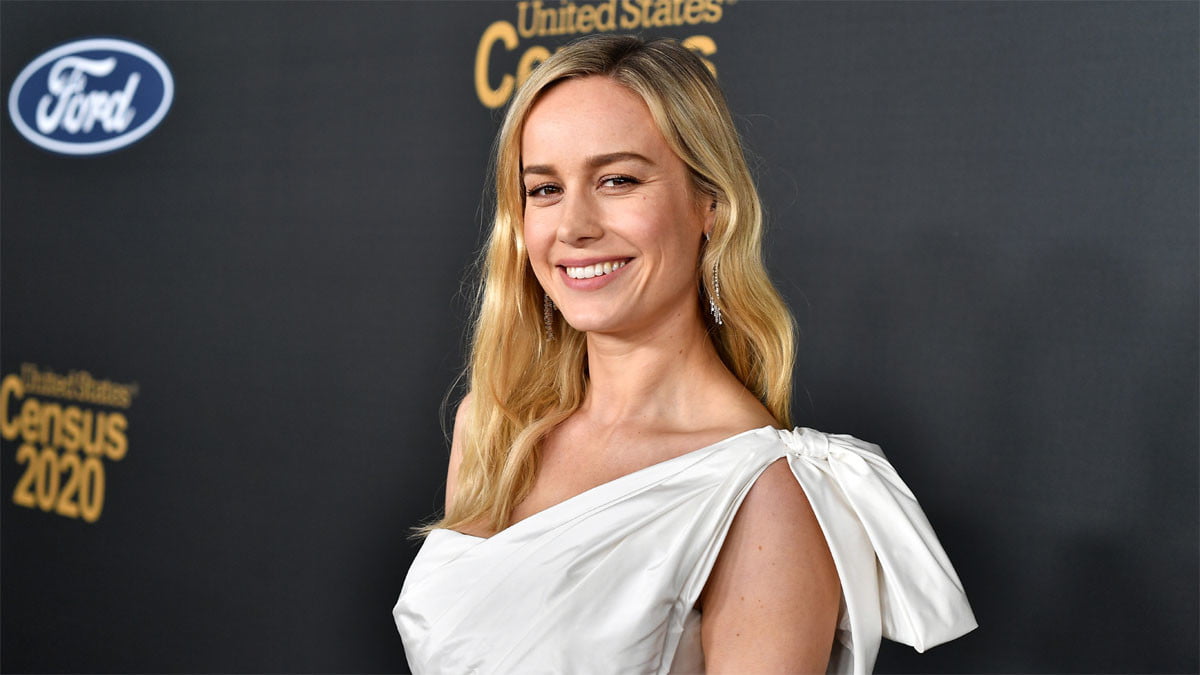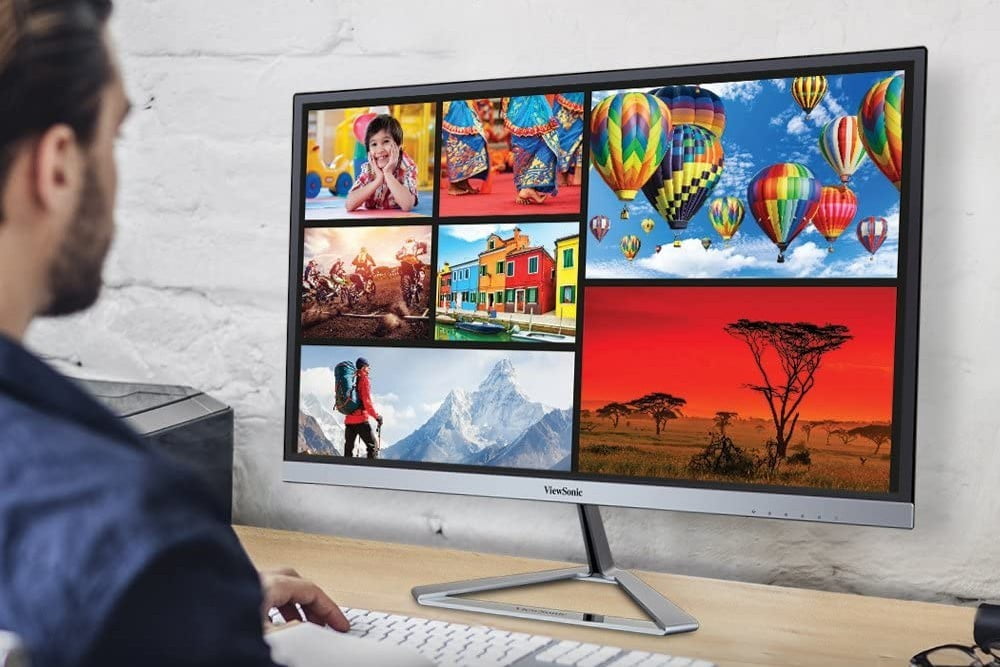When it comes to the TV resolution wars, nothing can stand in the way of progress. When once the world thought 4K was the be-all, end-all, in came 8K to blow us away yet again. 8K TV models have steadily been arriving in stores and online for the last couple of years — so it’s never too late to start familiarizing yourself with 8K Ultra HD.
In a nutshell, if 4K Ultra HD is four times the resolution of Full HD, then 8K Ultra HD is four times the resolution of 4K Ultra HD and 16 times the resolution of Full HD. But is this a worthwhile addition to your home entertainment setup, and will it replace 4K Ultra HD anytime soon? No, not yet. You’re still better off getting yourself a 4K TV, and that tech is still improving every year, too. But it’s always good to keep one eye on the future, so let’s dig into 8K TV and get prepared.
What is 8K?
If you use basic math, it may seem like 8K would provide double the resolution of 4K, but that isn’t the case. Since we’re talking two dimensions here — horizontal lines and vertical lines — it’s actually a whopping 16 times the pixels of HD and four times the pixels of 4K: an 8K resolution screen equates to 7680 x 4320, or 33 million pixels (33,117,600, to be exact), instead of 3840 x 2160 (8,294,400 pixels). To more easily visualize it, imagine four 4K TVs placed in a four-by-four grid. That is a lot of pixels.
Other technologies such as high dynamic range (HDR) can and do sometimes make a more visible difference, especially from a distance, since TVs show a brighter and more colorful picture with HDR. However, 8K is absolutely noticeable on larger displays, and the closer you get, the better it looks.
A brief history of 8K TV (so far)
Just as 4K TVs were beginning to take off, 8K started appearing (and we’re sure the same will happen with 8K and beyond, forever). While display panels had been shown earlier, Sharp showed off the first actual 8K TV at CES 2013 with an impressive 85-inch model. In 2015, Sharp would also be the first company to sell an 8K TV, another 85-inch monster priced at $133,000.
In the following years, other companies began to show their own 8K TV prototypes and eventually start releasing them to the market, albeit at much cheaper prices than Sharp’s initial release, but still priced well beyond affordable. It’s only been in the last couple of years that 8K TVs have become more available and at prices in the same ballpark as some higher-end 4K TVs. And even though the content is still more or less non-existent (more on that below), and we still don’t think it’s necessary to get into an 8K TV quite yet, they’re much more attainable than ever and worth keeping an eye on.
But is it real 8K TV?
As with any new technology, competing brands are going to do their best to convince buyers that their version of 8K is the best version of 8K. In an effort to bring some consistency to these claims so that we don’t have to wade through endless specs and stare at a bunch of TVs side by side at our local big-box store, the Consumer Technology Association (CTA) announced its 8K TV program, complete with an official 8K Ultra HD logo.
Any TV that meets the CTA’s specifications for 8K can voluntarily display the logo on packaging and marketing material, which is intended to give buyers some peace of mind that they’re getting the latest and greatest. To qualify, a TV must have a truly native resolution of 8K (7680 x 4320) and be able to upscale non-8K material to full 8K resolution. It also has to support HDR — though there’s no requirement for which of the many HDR formats it must support. Finally, it needs to have at least one input that’s HDCP 2.2 compliant, and it must be able to handle 10-bit color on a pixel-by-pixel basis.
So that’s it, right? All we need to do is look for that logo and we’re guaranteed that we’re getting a high-quality 8K model? Not so fast.
Independent from the CTA, the 8K Association is a collection of manufacturers and other industry players that have banded together to form their own standard for 8K picture quality along with — as you’ve probably guessed — its own logo.
Curiously, there doesn’t appear to be much of a difference between these two certifications — at least as far as we can tell from what each group has published so far. One requirement the 8K Association has that the CTA does not is HDMI 2.1.
Great! So as long as our new 8K TV has one of these two certification logos, we should be good to go … right? Er, hold that thought.
The 8K Association’s membership includes many of the top TV makers such as Samsung, Panasonic, Hisense, and TCL. However, LG is not among the member companies. That’s likely because LG has taken a stand over what it considers “real 8K.”
According to LG, if you really want to understand how well an 8K display performs, you need to look at a measurement that you’d be hard-pressed to find listed anywhere: Contrast modulation (CM). CM is a measurement of how precisely contained each pixel’s color and brightness is from its neighboring pixels. The higher the CM value, the sharper the perceived image. CM is measured as a percentage from zero to 100. LG has claimed that its 8K TVs have the highest CM values in the industry — up to 90% in the case of the 8K OLED TV and NanoCell TVs.
The reason LG has made such a big deal about the CM capabilities of their TVs is that the CTA’s 8K specification insists on a minimum of 50% CM. Not only has LG claimed that its screens handily exceed this requirement, but it also pointed out that some 8K TVs made by Samsung don’t even meet the CTA’s minimum CM value and thus cannot be considered “real” 8K TVs.
Contrast modulation is a very real thing, but just how much of a difference does it make when you’re sitting 8 feet from an 88-inch 8K television? As we publish more 8K TV reviews, we’ll attempt to answer that question, but for the moment, we believe that variables such as brightness, contrast, color gamut and accuracy, and viewing angles all play a larger role in how good an 8K screen (or even a 4K screen) looks.
When will 8K TVs become readily available?
Ready or not, 8K TVs are here.
If you want to jump on the 8K bandwagon immediately, Samsung, LG, Sony, TCL, and Hisense all have 8K models you can buy right now, with sizes that start at 55 inches and prices that begin at around $2,000.
And the field for 8K TVs is finally starting to open up, with the 2021 models that debuted at last year’s CES now available, as well as some of the TVs announced at CES 2022, offering a greater selection of both sizes and prices.
TCL’s 2021 8K 6-Series mini-LED TVs have been on sale since last summer and boy did they make a splash. With prices having dropped over the last year, you can get into one of these sets for as little as $1,800 for the 65-inch model and only $5,500 for the 75-incher, bringing 8K TVs within arm’s reach for many more consumers. The game-changer here is TCL’s mini-LED backlight technology, which gives the 2021 6-Series an edge over older 8K models because of its ability to pack a ton more LEDs into the backlight system, allowing for greater control over the contrast and black levels. Our TCL 8K 6-Series in-depth review looks at all of its features and benefits. As far as what’s coming up for TCL, there’s a ton of buzz around its latest 8K set, the company’s $10,000 flagship 85-inch 8K QLED X925pro (X9), which uses TCL’s latest generation mini-LED backlight system, called OD Zero. It was rumored that the TV would hit stores before the end of last year, but we’re still waiting, with bated breath, for its arrival.
LG has been a leader in the 8K space, starting with their impressive flagship 88-inch ZX OLED 8K TV that rolled out in 2019. For 2022, the South Korean electronics giant will release the latest version of that flagship 8K TV, with the 88-inch OLED88Z2PUA ($25,000) and a 77-inch version, the OLED778Z2PUA ($13,000), both scheduled to be released in April. In the meantime, and assuming you don’t have pockets deep enough for that craziness, LG’s stellar lineup of 2021 8K sets are still available, and they’re quite acceptable, including their 8K NanoCell 99 TVs: An 86-inch model for $4,999, a 75-inch model for $3,499, and a 65-inch model for $2,999. Alternately, LG also launched their 2021 line of mini-LED TVs, dubbed QNED MiniLED, with their 99 Series also dropping in price, now starting at $1,999 for the 65-inch model, $2,799 for the 75-inch, and $3,499 for the 86-inch.
For 2022, Samsung has added three models to its 8K range, all with 65-, 75-, and 85-inch models: The QN900B ($5,000 to $8,500), QN800B ($3,500 to $6,500), and forthcoming QN850B (pricing TBD), all still powered by mini-LED and sharing several common features, including beautiful edge-to-edge picture and support for HDR10+ Adaptive. New for the 2022 lineup is 14-bit processing and a supported 144Hz refresh rate when viewing 4K content (QN900B only). All models also get an anti-reflective layer to reduce distractions. That said, Sammy’s 2021 8K TVs are also still great and have come down in price as well, with its QN900A and QN800A ranging in price from $3,000 to $4,500.
Sony’s 2021 Sony XR Z9J thoroughly impressed our intrepid reviewer, Caleb Denison, and you can still get both the 75- and 85-inch varieties for a reasonable $4,999 and $7,999, respectively. But for 2022, the Z9J elevates from its “Full-Array LED” and gets the mini-LED treatment for the latest iteration, the flagship Bravia XR Z9K. The Z9J was Sony’s first TV to run Google TV, and the Z9K will follow suit while also getting a handful of improvements, such as an update to its Cognitive Processor XR, bringing better sound, depth control, and color. But perhaps the biggest, most interesting addition to the Z9K is the Bravia Cam, a magnetically mounted camera module for video calling and, eventually, a whole pile of other features such as gesture control, auto-dimming that detects when people leave the room, and further sound and picture optimization based on the camera detection where people are sitting in the room. While Sony has yet to confirm, the Z9K should hit the shelves later this spring or early summer.
Last but certainly not least is Hisense, the Chinese multinational with TVs that have gone from relatively obscure to impressive, with affordable, high-performing, and feature-rich panels. The same can be said for their entree into the 8K arena late last year with the U800GR, a 75-inch, sub-$2,000 Roku TV driven by Hisense’s ULED technology that delivers 1,000 nits of brightness and a native refresh rate of 120Hz that gamers will love for its smoothness. Dolby Vision and Dolby Atmos are supported, as well as HRD10 and HLG for dynamic contrast and brightness. Hisense is one company to keep an eye on for future 8K TVs.
With these prices, 8K TVs are still out of reach for those with limited budgets. But assuming they continue their downward trajectory much as 4K did, by 2022, we expect we’ll see lots of great 8K TVs priced well below $2,000.
What about 8K content?
The last piece of the 8K puzzle to get its act together to make the 8K unicorn actually worthwhile is to have the incoming sources to these hi-tech 8K TVs delivered in 8K as well. It takes a ton of data and speed to transmit 8K. Whether that’s getting our streaming services producing and offering 8K content or broadcasters doing the same, we’re still a long way off from that. But it is slowly changing.
But there are some sources you can go to for 4K content. In November 2017, video-streaming site Vimeo added support for 8K, and it now has over 11,000 videos tagged as 8K. YouTube got on the 8K bandwagon even earlier, and it too boasts thousands of 8K videos.
On the broadcasting front, Japanese satellite broadcaster NHK is the first TV channel to broadcast in 8K. It launched a test channel dedicated to showing 8K content in December 2017. In 2019, the channel became permanent, broadcasting 12 hours a day of entertainment, art, documentary, and sports programming. That included the 2020 Tokyo Olympics, with NHK broadcasting roughly 200 hours of 8K UHD coverage, including the opening and closing ceremonies and seven events, including swimming, athletics, and judo.
More recently, in March of this year, U.K. pay-television provider BT Sport broadcast an English Premiership rugby match between Saracens and Bristol Bears in 8K UHD for the first time to select homes. The event was produced using 8K broadcast trucks parked out the venue and filming with specialized Sony UHC-8300 cameras.
But native 8K content isn’t the only reason to have an 8K TV if you’re looking at a large screen size. 8K TVs can upscale 4K content to 8K, and the difference in clarity is stark. To prove this point, Samsung put two 85-inch TVs side by side, one playing 4K content in 4K, the other upscaling 4K content to 8K. The difference was apparent, with the upscaled 4K video playing on the 8K TV looking visibly superior.
There are also consumer 8K cameras available, and you can be sure that companies are preparing to offer 8K content at some point, but for a clue as to how long you’ll need to wait, simply take a look at where 4K content is right now. Streaming services such as Amazon Prime Video, Fandango, Hulu, iTunes, Netflix, UltraFlix, VUDU, and YouTube offer 4K streaming, and there’s a large and growing collection of 4K UHD Blu-ray discs, but 4K has a long way to go before it reaches anywhere near the ubiquity of HD.
The ATSC 3.0 digital broadcast standard (also known as NextGen TV) will eventually lead to 4K broadcasting over the air and through cable and satellite providers, but the standard was only finally approved by the FCC in November 2017. Technically, 8K is compatible with ATSC 3.0, but right now, it’s an easy bet that most cable, satellite, and other content providers are focused on rolling out programming for viewers eager to make the most out of their 4K TVs.
Thanks to the popularity of HDR, content providers are also focused on increasing their HDR offerings, yet another thing that may stand in the way of a widespread focus on 8K video, at least for the time being.

As with so many advances, it could be gaming that ushers us into an 8K world faster than movies or TV shows. Sony’s PlayStation 5 game console now supports 8K graphics, as does the Microsoft Xbox X Series console, although some game experts are saying it’s not worth their time.
Ready to get a new TV? While you can already get your hands on an 8K TV, like the early days of both HD and 4K, it will be a lot longer before they’re practical for most people. For most of us, 4K TVs have plenty of life left in them.


